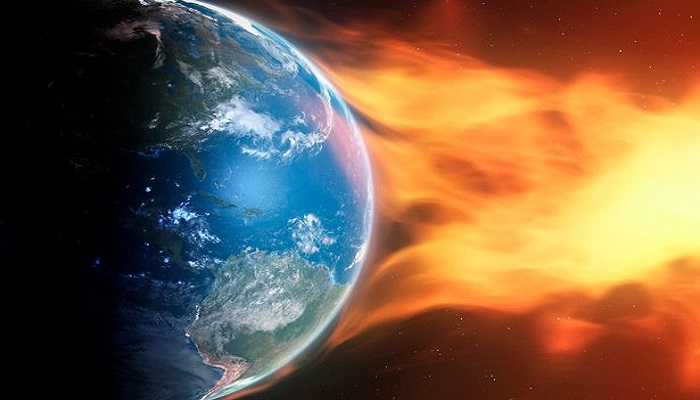Solar Storm Alert: Potential Disruptions and Spectacular Auroras Await: Scientists from NASA and the Space Weather Prediction Center have issued a warning regarding an impending solar storm expected to hit Earth today, November 30. The National Oceanic and Atmospheric Administration’s Space Weather Prediction Center has issued a geomagnetic storm watch alert for December 1, anticipating disruptions to radio and GPS signals. The solar storm, known as “cannibal CMEs,” is the result of a powerful M9.8-class solar flare that erupted from the sun on November 29 at 2:50 p.m. EST, ejecting a plasma eruption called a coronal mass ejection (CME) toward Earth.

Potential Impacts:
The solar storm is expected to disrupt radio and GPS signals, posing challenges for communication and navigation systems. A 15-hour-long G2-class solar flare is anticipated, which could lead to vivid auroras lighting up the nighttime sky. The flare may also cause radio blackouts, as experienced earlier in the week. The geomagnetic storms could reach G3-class intensity, potentially affecting mid-latitude auroras.
Coronal Mass Ejection (CME) Explained:
A CME is a release of highly charged ions from the sun, capable of damaging satellites and communication systems on Earth. These ejections can bombard Earth’s magnetosphere with solar energy, and exciting gases like oxygen and nitrogen. Spaceweather.com reports that three or perhaps four CMEs are heading for Earth following recent solar explosions, with the largest CME launched on November 28 potentially combining with earlier ones, forming a Cannibal CME.
Expert Insights:
Dr. Tamitha Skov, a space weather scientist, notes that the solar storm is directed towards Earth’s south. During this event, auroras are expected to illuminate the sky due to the intense interaction of CMEs with the thermosphere layer of the atmosphere, where ions are free to move.
In Conclusion: As Earth braces for the impact of the solar storm, the potential disruptions to communication and navigation systems highlight the importance of preparedness. While challenges may arise, skywatchers can also anticipate the mesmerizing display of auroras painting the night sky during this celestial event.

